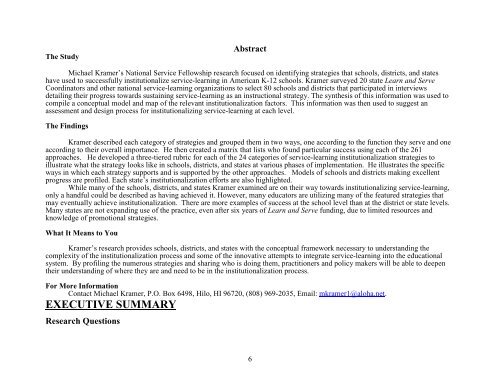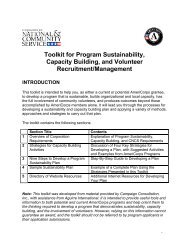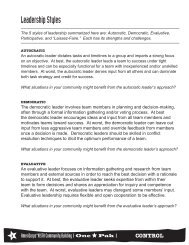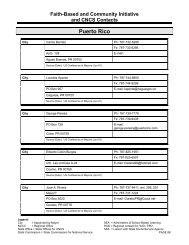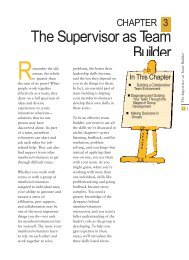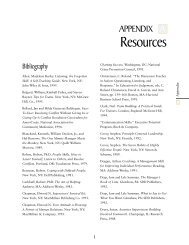MAKE IT LAST FOREVER: THE ... - National Service Resource Center
MAKE IT LAST FOREVER: THE ... - National Service Resource Center
MAKE IT LAST FOREVER: THE ... - National Service Resource Center
You also want an ePaper? Increase the reach of your titles
YUMPU automatically turns print PDFs into web optimized ePapers that Google loves.
The Study<br />
Abstract<br />
Michael Kramer’s <strong>National</strong> <strong>Service</strong> Fellowship research focused on identifying strategies that schools, districts, and states<br />
have used to successfully institutionalize service-learning in American K-12 schools. Kramer surveyed 20 state Learn and Serve<br />
Coordinators and other national service-learning organizations to select 80 schools and districts that participated in interviews<br />
detailing their progress towards sustaining service-learning as an instructional strategy. The synthesis of this information was used to<br />
compile a conceptual model and map of the relevant institutionalization factors. This information was then used to suggest an<br />
assessment and design process for institutionalizing service-learning at each level.<br />
The Findings<br />
Kramer described each category of strategies and grouped them in two ways, one according to the function they serve and one<br />
according to their overall importance. He then created a matrix that lists who found particular success using each of the 261<br />
approaches. He developed a three-tiered rubric for each of the 24 categories of service-learning institutionalization strategies to<br />
illustrate what the strategy looks like in schools, districts, and states at various phases of implementation. He illustrates the specific<br />
ways in which each strategy supports and is supported by the other approaches. Models of schools and districts making excellent<br />
progress are profiled. Each state’s institutionalization efforts are also highlighted.<br />
While many of the schools, districts, and states Kramer examined are on their way towards institutionalizing service-learning,<br />
only a handful could be described as having achieved it. However, many educators are utilizing many of the featured strategies that<br />
may eventually achieve institutionalization. There are more examples of success at the school level than at the district or state levels.<br />
Many states are not expanding use of the practice, even after six years of Learn and Serve funding, due to limited resources and<br />
knowledge of promotional strategies.<br />
What It Means to You<br />
Kramer’s research provides schools, districts, and states with the conceptual framework necessary to understanding the<br />
complexity of the institutionalization process and some of the innovative attempts to integrate service-learning into the educational<br />
system. By profiling the numerous strategies and sharing who is doing them, practitioners and policy makers will be able to deepen<br />
their understanding of where they are and need to be in the institutionalization process.<br />
For More Information<br />
Contact Michael Kramer, P.O. Box 6498, Hilo, HI 96720, (808) 969-2035, Email: mkramer1@aloha.net.<br />
EXECUTIVE SUMMARY<br />
Research Questions<br />
6


